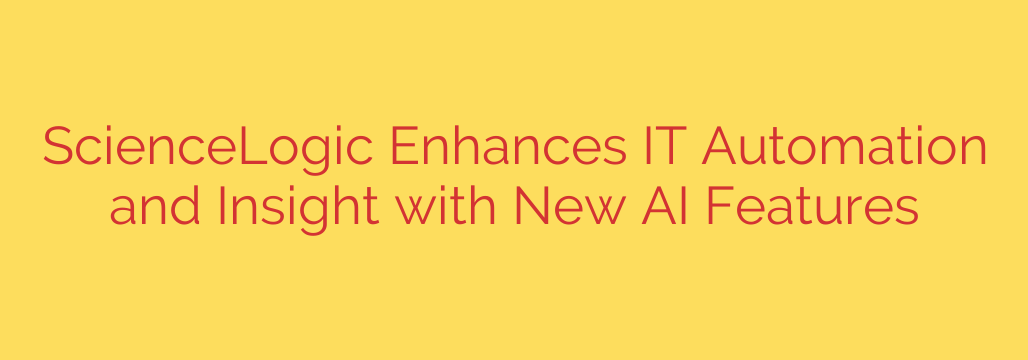
The Future of AIOps: How Generative AI is Revolutionizing IT Automation and Insight
In today’s sprawling IT landscape, managing hybrid cloud environments, ever-increasing data volumes, and a constant stream of alerts has become a monumental challenge. IT operations teams are often caught in a reactive cycle, drowning in noise and struggling to pinpoint the root cause of issues before they impact the business. A new evolution in AIOps (Artificial Intelligence for IT Operations) is changing this paradigm, leveraging the power of generative AI to deliver clarity, speed, and intelligent automation.
This next-generation approach moves beyond simple pattern recognition to provide deep, context-aware insights and actionable solutions, transforming how organizations maintain digital service health.
Cutting Through the Noise with AI-Powered Incident Summarization
One of the biggest hurdles in incident management is “alert fatigue.” A single performance issue can trigger hundreds of technical alerts across servers, networks, and applications. Sifting through this data to understand the core problem is time-consuming and requires deep expertise.
Generative AI is now being used to solve this directly. By analyzing floods of technical alerts and performance data in real-time, the technology can produce clear, human-readable summaries of complex incidents.
Instead of a cryptic list of error codes, an IT professional receives a concise paragraph explaining what is happening, which services are impacted, and the likely root cause. This allows IT teams, from senior engineers to junior technicians, to instantly grasp the “what, where, and why” of an issue, drastically cutting down on diagnosis time. This capability empowers less experienced staff to handle initial triage effectively, freeing up senior talent for more critical tasks.
Beyond Diagnosis: Driving Action with Automated Remediation
Identifying a problem is only half the battle. The next crucial step is remediation. Modern AIOps platforms are now integrating AI to not only diagnose issues but also to recommend and even execute the solutions.
Based on its analysis of an incident, the AI can suggest a specific, pre-approved automated workflow—often called a runbook—to resolve the issue. For example, if a server is running out of disk space, the AI might recommend an automated script to clear temporary files or archive old logs.
This dramatically reduces Mean Time To Resolve (MTTR) and frees up highly skilled staff from performing repetitive, manual tasks. The system effectively connects the dots from observation to insight to action, creating a seamless and efficient operational workflow.
Context is Everything: The Power of Service-Aware AI
The true power of this new wave of AIOps lies in its use of context. Generic AI models lack the specific knowledge of an organization’s unique IT environment. To be truly effective, an AI must be trained on the data relevant to the services it is monitoring.
Effective AIOps platforms build this context by continuously mapping your entire IT ecosystem, including service topology, dependencies, and historical performance data. This creates a rich, dynamic foundation for the AI to learn from.
By training on an organization’s unique operational data, the AI provides recommendations that are not just intelligent, but highly relevant and accurate. This service-aware context ensures that the insights and automated actions are safe, precise, and tailored to your specific business needs.
Building Trust: The Importance of Human-in-the-Loop Automation
While the goal is increased automation, ceding complete control to an AI can be a daunting prospect. This is why a “human-in-the-loop” model is a critical security and governance feature. Instead of having the AI act autonomously, it presents its findings and recommended actions to an operator for final approval.
This approach provides essential guardrails, allowing teams to validate the AI’s suggestions before they are executed. An IT manager can review the proposed automated fix, understand its potential impact, and approve it with a single click.
This ‘human-in-the-loop’ approach ensures that automation aligns with internal governance and security policies, building trust in the system. It combines the speed and analytical power of AI with the experience and oversight of human experts, offering the best of both worlds.
The integration of generative AI into operational platforms is no longer a future concept; it’s a present-day reality that is fundamentally improving IT efficiency. By providing clear summaries, recommending intelligent actions, and operating with full business context, these advanced AIOps solutions are empowering organizations to move from a reactive to a proactive and predictive stance, ensuring their digital services remain resilient and performant.
Source: https://datacenternews.asia/story/sciencelogic-unveils-new-ai-features-to-boost-it-automation-insight








